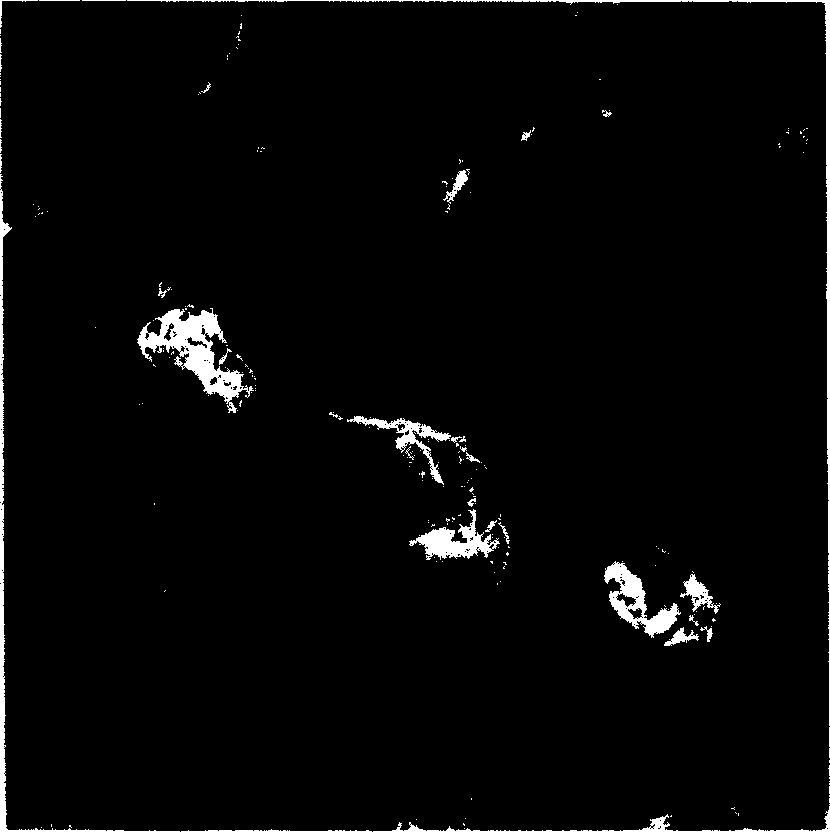Stuffing of controllable degradative macropore cellulose for carrying microbe in use for treating wastewater and preparation
A microbial carrier and wastewater treatment technology, applied in biological water/sewage treatment, water/sludge/sewage treatment, sustainable biological treatment, etc. low controllability and other problems, achieving the effect of low cost and simple preparation process
- Summary
- Abstract
- Description
- Claims
- Application Information
AI Technical Summary
Problems solved by technology
Method used
Image
Examples
example 1
[0016] Alkaline 10g of cellulose with 50ml of 20% NaOH solution for 1 hour, then add 5g of carbon disulfide and yellow it for 90 minutes at a temperature of 30°C to obtain cellulose xanthate, then add 5% NaOH solution to make the concentration of cellulose xanthate 10 % viscose solution, add 1.5g short cotton fibers and mix evenly, then add 6% foaming agent accounting for the total viscose mass and inject it into the mold for foaming at a temperature of 100°C, and finally regenerate in dilute sulfuric acid solution to obtain porous cellulose Carrier with an average pore size of 200μm, a porosity of 40%, and a specific surface area of 7m 2 / g. Dissolve 1g of ethylene glycol diglycidyl ether in 30ml of 0.5% NaOH solution, add 10g of absolute dry porous cellulose carrier to completely immerse and let it stand for 30min, then place the above mixture in a 60°C water bath and heat for 3 hours. Finally, the cross-linked body was taken out, rinsed with clean water, and dried at low...
example 2
[0018] The preparation of the viscose solution is the same as that of Example 1. Add 1 g of short cotton fibers to the viscose with a concentration of cellulose xanthate of 10% and mix evenly, then add 10% of the foaming agent accounting for the total viscose mass and inject it into the mold at a temperature of 120 ° C. Foaming, and finally regenerated in dilute sulfuric acid solution to obtain a porous cellulose carrier, with an average pore size of 300 μm, a porosity of 50%, and a specific surface area of 10 m 2 / g. Dissolve 5g of ethylene glycol diglycidyl ether in 30ml of 0.5% NaOH solution, add 10g of absolute dry porous cellulose carrier to completely immerse and let it stand for 30min, then place the above mixture in a water bath at 60°C for 3 hours, and finally The cross-linked body was taken out, rinsed with clean water, and dried at low temperature to obtain an absolute dry cross-linked cellulose carrier, which was degraded in a cellulase solution for 8 days, and t...
example 3
[0020] Alkaline 10g of cellulose with 50ml of 15% NaOH solution for 1 hour, add 3g of carbon disulfide and yellow it for 90 minutes at a temperature of 30°C to obtain cellulose xanthate, then add 5% NaOH solution to make the concentration of cellulose xanthate 8% viscose solution, add 0.5g short cotton fibers and mix evenly, then add foaming agent accounting for 12% of the total viscose mass, pour into the mold to foam at a temperature of 140°C, and finally regenerate in dilute sulfuric acid solution to obtain a porous cellulose carrier , the average pore diameter is 800μm, the porosity is 70%, and the specific surface area is 5m 2 / g. Dissolve 9g of ethylene glycol diglycidyl ether in 30ml of 0.5% NaOH solution, add 10g of absolute dry porous cellulose carrier to completely immerse and let it stand for 30min, then heat the above mixture in a water bath at 60°C for 3 hours, and finally The cross-linked body was taken out, rinsed with clean water, and dried at low temperature ...
PUM
| Property | Measurement | Unit |
|---|---|---|
| Average pore size | aaaaa | aaaaa |
| Specific surface area | aaaaa | aaaaa |
| Average pore size | aaaaa | aaaaa |
Abstract
Description
Claims
Application Information
 Login to View More
Login to View More - R&D
- Intellectual Property
- Life Sciences
- Materials
- Tech Scout
- Unparalleled Data Quality
- Higher Quality Content
- 60% Fewer Hallucinations
Browse by: Latest US Patents, China's latest patents, Technical Efficacy Thesaurus, Application Domain, Technology Topic, Popular Technical Reports.
© 2025 PatSnap. All rights reserved.Legal|Privacy policy|Modern Slavery Act Transparency Statement|Sitemap|About US| Contact US: help@patsnap.com

